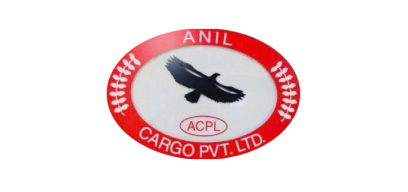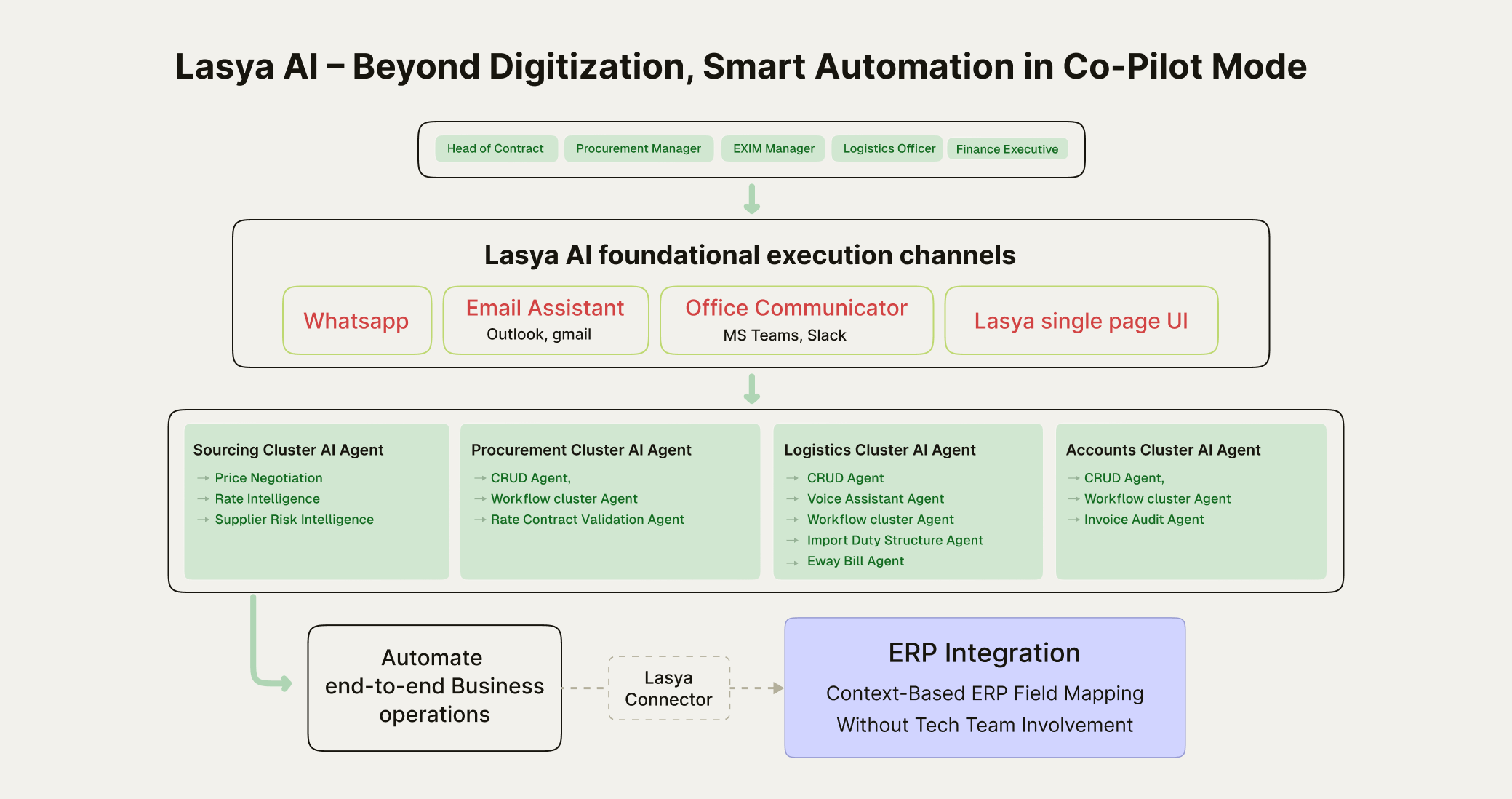
Sourcing AI Agents
AI Agents that automate vendor discovery source, generates negotiation scripts and counter-offers using market indices and should-cost insights & finalize suppliers autonomously
View More InsightsAutomate material sourcing, RFQs, vendor follow-ups, invoice audits, and shipment tracking—without changing your ERP
Teams reduce operational cycle times by up to 60% within 90 days
.png)




















Lasya AI automates sourcing, procurement, logistics, EXIM workflows, tracking, and invoice audits—so your systems update you, your teams focus on decisions, and operations finally run on autopilot.
Explore Lasya AI
AI Agents that automate vendor discovery source, generates negotiation scripts and counter-offers using market indices and should-cost insights & finalize suppliers autonomously
View More Insights
AI Agents that autonomously handle orchestration, approvals, and amendments—without forms, fields, screen switching, or navigating multiple pages

AI agents that autonomously audit invoices with template-agnostic OCR and rate-card validation, driving end-to-end invoice orchestration and approvals

AI agents for dispatch orchestration, carrier follow-ups, vehicle placement, approvals, amendments, and invoice auditing—without filling forms or switching screens

AI Agents for multimodal shipment orchestration, container/AWB tracking, document-checklist automation, duty-structure validation, and real-time exception management

AI Agents that autonomously validate vendor onboarding documents, enforce compliance, automate EXIM document requirements globally, extract critical data, and surface insights for approvals
Your teams communicate naturally from Lasya UI, WhatsApp, email, or office chat tools → Lasya AI understands the intent and assigns it to specialized AI agent clusters → autonomous agents execute sourcing, procurement, logistics, and finance operations → the Lasya Connector updates your ERP automatically.This creates a fully automated, end-to-end operational workflow that eliminates manual tasks, reduces errors, accelerates turnaround times, and gives your business a unified, intelligent automation layer across all departments.

Your teams simply message Lasya AI from tools they already use—WhatsApp, Email, MS Teams, Slack, or the Lasya UI.They describe what they need in plain language, and Lasya instantly understands the request, the context, and the required documents.
Lasya routes each request to the right AI Agent Cluster—Sourcing, Procurement, Logistics, or Accounts.These agents handle tasks such as validations, approvals, tracking updates, audits, negotiations, and workflows without human efforts
Once the work is completed, the Lasya Connector updates your ERP using context-based field mapping.No coding, no IT tickets—your ERP always stays accurate and up to date
Accelerate sourcing cycles with AI-driven supplier discovery and negotiation
Enable fast, compliant, and error-free purchase workflows
Turn invoice review from a manual burden into an automated, intelligent flow
Streamline cargo movement across road, air, rail, and ocean
Digitize and automate the entire export-import documentation workflow
Simplify contract authoring, negotiation, and approvals with AI
Improve supplier collaboration and unlock better performance outcomes
Enable due-diligence processs automation and rain real time master intelligence
Leverage advanced algorithms and real-time analytics to enhance forecasting, boost efficiency,
drive growth, and enable smarter decision-making
Planning for smarter procurement, inventory control, and production efficiency
Enhance business agility with real-time demand sensing and AI-driven forecasting
Smart Planning to reduce shipping costs and improve multimodal logistics efficiency
LASYA AI leverages multimodal AI agents to deliver an intelligent
business operations solution - Enabling autonomous decision-making and workflow automation
Transform your business with Lasya AI —optimize, automate, and scale smarter today!
